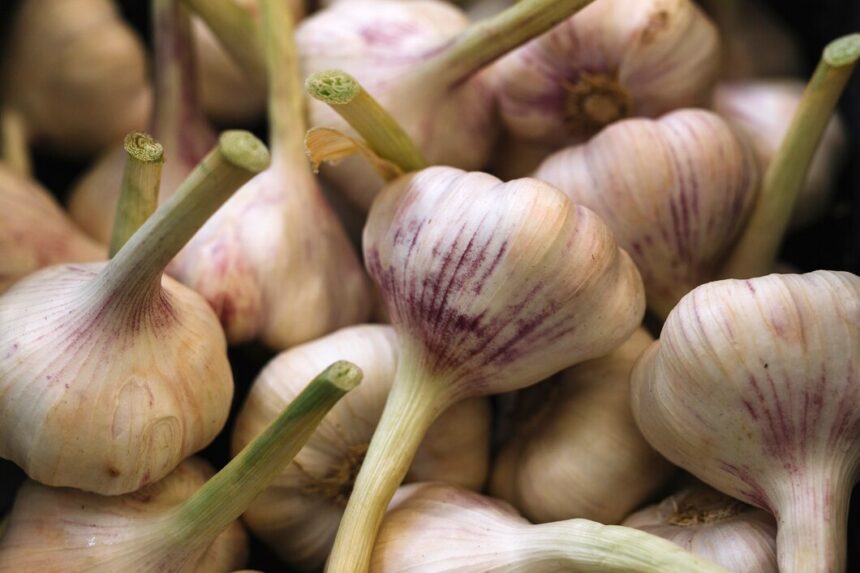White rot, caused by the fungus Sclerotium cepivorum, is a devastating disease that can severely impact garlic crops. Early detection is crucial for managing the disease and minimizing yield losses. Here are ten early signs that your garlic may be affected by white rot:
- Yellowing and Wilting Foliage: One of the first visible symptoms of white rot is the yellowing and wilting of garlic foliage. Affected plants may appear stunted and exhibit a general decline in vigor.
- Delayed Emergence: Infected cloves may exhibit delayed emergence compared to healthy plants. This delayed growth is often accompanied by poor stand establishment in affected areas of the field.
- White Mold on Bulb Scales: As the disease progresses, white mold may develop on the outer scales of garlic bulbs. This mold initially appears as fluffy white growth but can quickly spread and cover the entire bulb surface.
- Soft, Rotting Bulbs: Infected garlic bulbs become soft and mushy, with a characteristic foul odor. The rot typically starts at the basal plate and spreads upward, eventually causing bulb decay and collapse.
- Dark Lesions on Roots and Basal Plate: Upon closer inspection, dark lesions may be observed on the roots and basal plate of infected garlic plants. These lesions can serve as early indicators of white rot infection.
- Stunted Bulb Growth: Infected garlic bulbs often exhibit stunted growth compared to healthy bulbs. The bulbs may fail to develop to their full size and remain undersized and malformed.
- Premature Bulb Maturation: White rot can cause premature maturation of garlic bulbs, leading to early bulb senescence and drying of foliage. This premature aging is a result of the disease’s impact on bulb development and nutrient uptake.
- Fungal Sclerotia Formation: Sclerotia are small, hard structures produced by the white rot fungus. These structures may be found embedded within infected garlic tissue or present in the soil surrounding affected plants.
- Wilting of Flower Stalks: In advanced stages of white rot infection, garlic flower stalks may exhibit wilting and collapse. This symptom is often accompanied by the presence of white mold on the stalks and surrounding soil.
- Visible Mycelium in Soil: When scouting for white rot, carefully inspect the soil around garlic plants for the presence of fungal mycelium. White, thread-like structures may be visible in the soil, especially in areas with a history of white rot.
Early detection of white rot is essential for implementing effective disease management strategies, such as crop rotation, soil solarization, and the use of resistant garlic varieties. If you suspect white rot in your garlic crop, promptly remove and destroy infected plants to prevent further spread of the disease. Additionally, practice good sanitation and avoid planting garlic in infested soil to minimize the risk of future outbreaks. By staying vigilant and recognizing the early signs of white rot, garlic growers can protect their crops and ensure a successful harvest.
Join 'Farmers Mag' WhatsApp Channel
Get the latest Farming news and tips delivered straight to your WhatsApp
CLICK HERE TO JOIN






